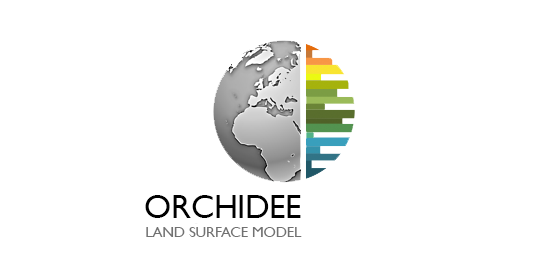| Version 4 (modified by klaurent, 6 weeks ago) (diff) |
|---|
ORCHIDEE_CAMEO_gmd_2022
This version of ORCHIDEE has been used in the publication "Global agricultural ammonia emissions simulated with the ORCHIDEE land surface model" by Beaudor et al., to be submitted to GMD. The original version from which CAMEO one was created is v6827. CAMEO accounts for 'Calculation of AMmonia Emissions in ORCHIDEE'. In this version, a new module called 'emis_nh3' has been implemented for the estimation of ammonia emissions from manure management activities. In addition, soil physical processes have been largely developed in order to improve the representation of the soil ammonia emissions in the stomate_soilcarbon routine.
Reference and information will be added later << Reference to be added as soon as the manuscript is available >>.
Abstract
Ammonia NH3 is an important atmospheric constituent. It plays a role in air quality and climate through the formation of ammonium sulfate and ammonium nitrate particles. It has also an impact on ecosystems through deposition processes. About 85% of NH3 global anthropogenic emissions are related to food and feed production and, in particular, to the use of mineral fertilizers and manure management. Most global chemistry transport models rely on bottom-up emission inventories subject to significant uncertainties. In this study, we estimate emissions from livestock by developing a new module to calculate ammonia emissions coming from the whole agricultural sector (from housing and storage to grazing and fertilizer applications) within the global land surface model ORCHIDEE. We detail the approach used for quantifying livestock feeding management, manure applications, and indoor and soil emissions and evaluate the model performance. Our results reflect China, India, Africa, Latin America, the USA, and Europe as the main contributors to the global NH3 emissions accounting for 80% of the total budget. The global calculated emissions reach 44Tg/yr over the 2005-2015 period, which is within the range estimated by previous work. Key parameters (pH of the manure, timing of the N application, atmospheric NH3 surface concentration, etc...) which drive the soil emissions have also been tested in order to assess the sensibility of our model. Manure pH is the parameter to which modeled emissions are the most sensitive with a 10% change in emissions per % change in pH. Even though we found an under-estimation in our emissions over Europe (-26%) and an over-estimation in the USA (+56%) compared to previous work, other hot-spot regions are consistent. The calculated emissions seasonality is in very good agreement with satellite-based emissions. These encouraging results prove the potential of coupling ORCHIDEE land-based emissions to CTMs, which are currently forced by bottom-up anthropogenic-centered inventories such as CEDS.
Code access
- See the version on the webinterface here : https://forge.ipsl.fr/orchidee/wiki/GroupActivities/CodeAvalaibilityPublication/ORCHIDEE_CAMEO_gmd_2022
- Extract it on a terminal as follow, type anonymous as password:
svn co --username anonymous svn://forge.ipsl.fr/orchidee/branches/publications/ORCHIDEE_CAMEO_gmd_2022 ORCHIDEE
Metadata
| DOI | [under request] |
| Creator | Maureen BEAUDOR |
| Affiliation | LSCE |
| Title | ORCHIDEE_CAMEO_gmd_2022 |
| Publisher | Institut Pierre Simon Laplace (IPSL) |
| PublicationYear | 2022 |
| ResourceType | Software |
| Rights | This software is distributed under the CeCILL license |
| rightsURI | http://www.cecill.info/ |
| Subject | N cycle, Land surface model, Agricultural ammonia emissions |
| DataManager | Karim Ramage (IPSL) |
| DataCurator | Josefine Ghattas (IPSL) |
| ContactPerson | Maureen Beaudor, Nicolas Vuichard (LSCE) |
| FundingReference | to be added |
